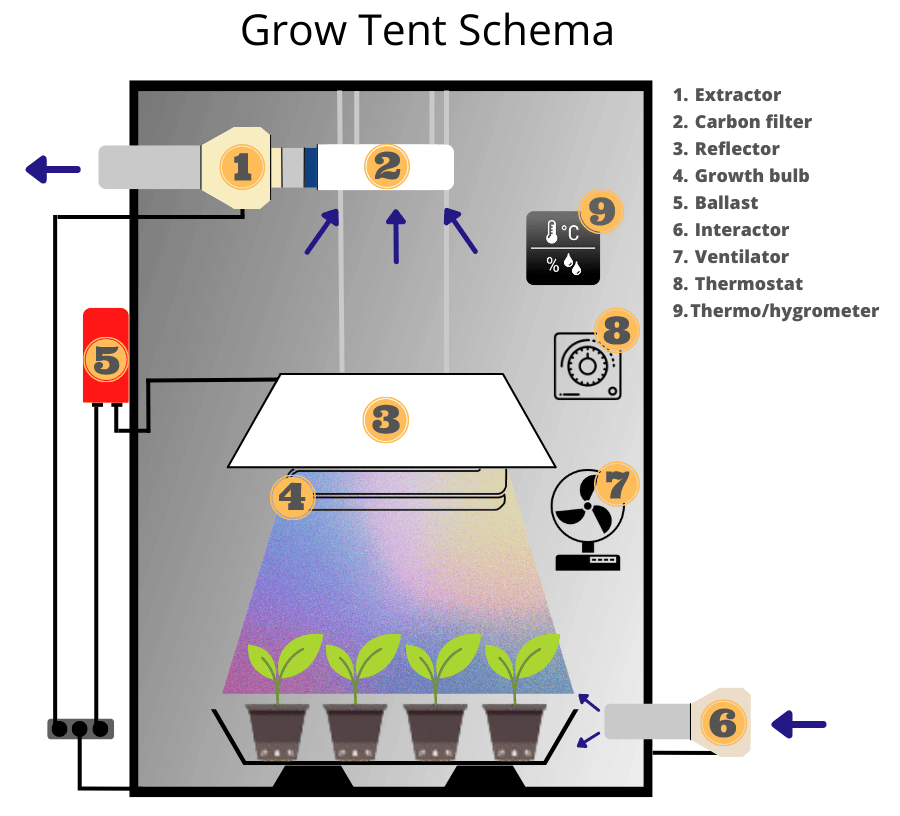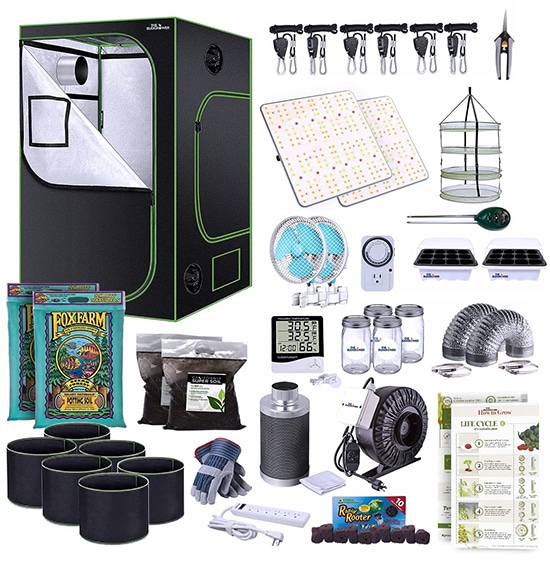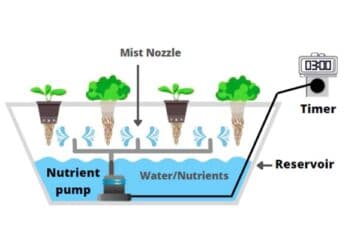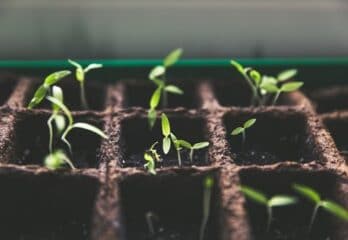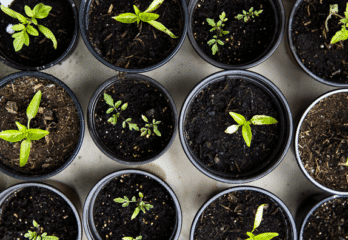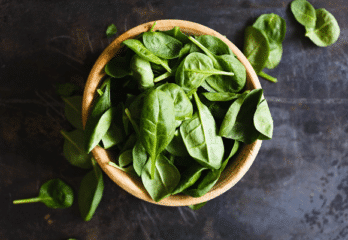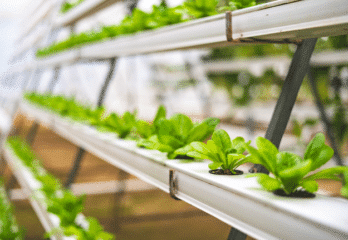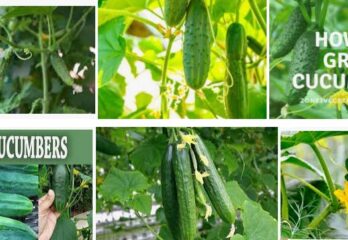Indoor gardening is becoming increasingly popular for urban dwellers and those with limited outdoor space. Hydroponic tower gardens are a great solution – they are compact, require no soil, can be placed in small spaces, and allow you to grow fresh herbs, vegetables, leafy greens, and more right inside your home. With a hydroponics system, plant roots are immersed in nutrient-rich water rather than soil, enabling fast growth all year long regardless of outdoor climate or seasons.
In this comprehensive guide, you’ll learn everything you need to know about tower hydroponic gardening. We’ll cover what exactly hydroponics and tower gardens are, highlight the most important components in an indoor hydroponic system, and compare popular hydroponic methods like deep water culture and nutrient film technique.
How Does Hydroponic Tower Garden Work?
Unlike traditional gardening in soil, hydroponic tower gardens utilize a soil-free system to cultivate plants with added nutrients. They work by using a vertical column design to maximize growth in limited floor space through stacking plants on top of each other.
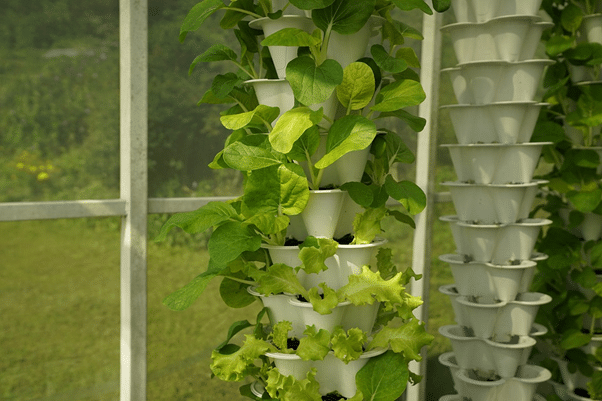
The central tower structure holds baskets or pots to contain the plant roots suspended in air. A recirculating hydroponic nutrient reservoir at the base provides water and mineral nutrients to nourish plants at regular intervals. An electric water pump continually flows the nutrient solution to the top of the tower. It trickles down each plant basket back to the reservoir in a continuous loop.
This ensures plant roots remain moist and receive equal bathing in nutrient-rich solution customized to the types of vegetables and herbs being grown. As the flowing liquid contacts exposed roots, plants can absorb all the moisture and essential elements they need such as nitrogen, phosphorus, potassium, calcium, iron, and magnesium.
With roots suspended in air, they also get ample oxygen. This supercharges growth compared to compacted soil. The vertical nature means light can easily reach plants on all sides for optimal photosynthesis using overhead LED full spectrum grow lights.
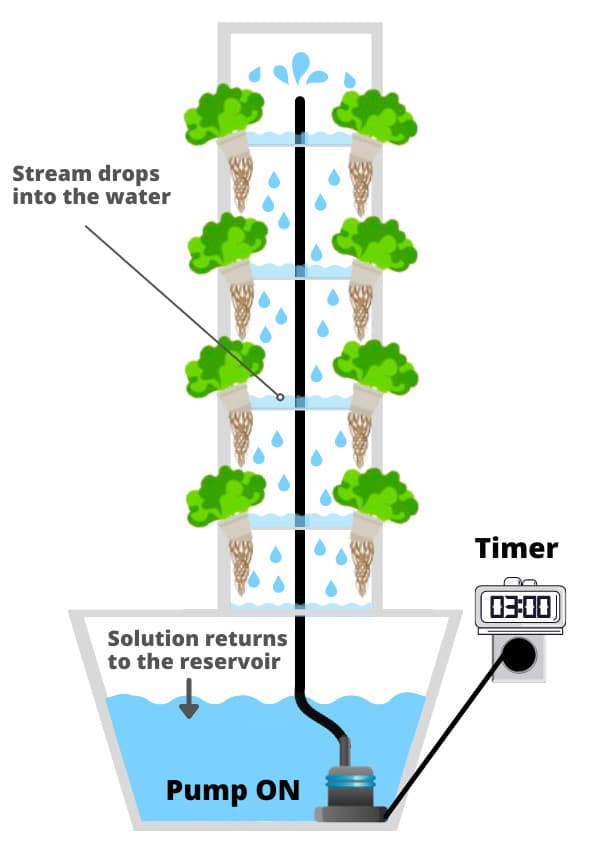
Tower hydroponic systems are highly efficient, producing up to 20 vegetables in just over 2 square feet of space. They allow continual harvesting as plants mature at different times. The enclosed system helps deter pests without chemical pesticides. It also minimizes water evaporation for water efficiency compared to outdoor gardening.
Benefits of Hydroponic Indoor Tower Garden
Growing ripe, flavorful produce year-round is now possible without ample yard space using a hydroponic indoor tower garden system. Perfect for urban gardening in apartments or condos, these compact vertical hydroponic units offer many benefits over traditional gardening for indoor spaces. Here are the top reasons to give tower hydroponic gardening a try:
- The diversity of plant selections. Hydroponic towers support growing a wide variety of vegetable crops, leafy greens, herbs, strawberries, and edible flowers indoors. The enclosed chamber provides ideal conditions to grow plants you may not easily cultivate outdoors in your climate. You can continually harvest greens like spinach, kale, arugula, and mixed leaves. As vertical space allows, expand into tomatoes, beans, peppers, and more.
- Great harvest potential. In a compact vertical space, a tower hydroponics system maximizes yield and harvest potential. With accelerated growth rates thanks to optimized lighting, temperature regulation, and hydration, you can yield over 20 plants in under 2 square feet. Continual harvesting means recurring plant cycles provide a steady supply of garden-fresh produce.
- Environmentally sustainable. Hydroponic tower gardens provide a sustainable way to cultivate specialty crops indoors. By reducing water needs up to 90% compared to soil and eliminating chemical pesticides, you decrease your environmental impact. Supplying full spectrum LED grow lights custom-tailored to plant needs also optimizes energy efficiency.
- Precision delivery of essential nutrients. As plant roots bathe in a carefully monitored mix of essential macro- and micronutrients, hydroponic systems allow precise control over nourishing plants. Carefully maintaining the right solution levels provides crops exactly what they require for optimal health and fruiting without excess. This precision leads to elevated quality and yield.
- Optimal plants nourishment. With their roots continuously immersed and aerated in a complete nutrient bath, tower hydroponic systems keep plants optimally nourished. Your custom mineral solution gives them a regular balanced diet. This protects against common gardening issues like uneven watering, dry spots, infertile soil, and nutrient deficiencies for peak plant health.
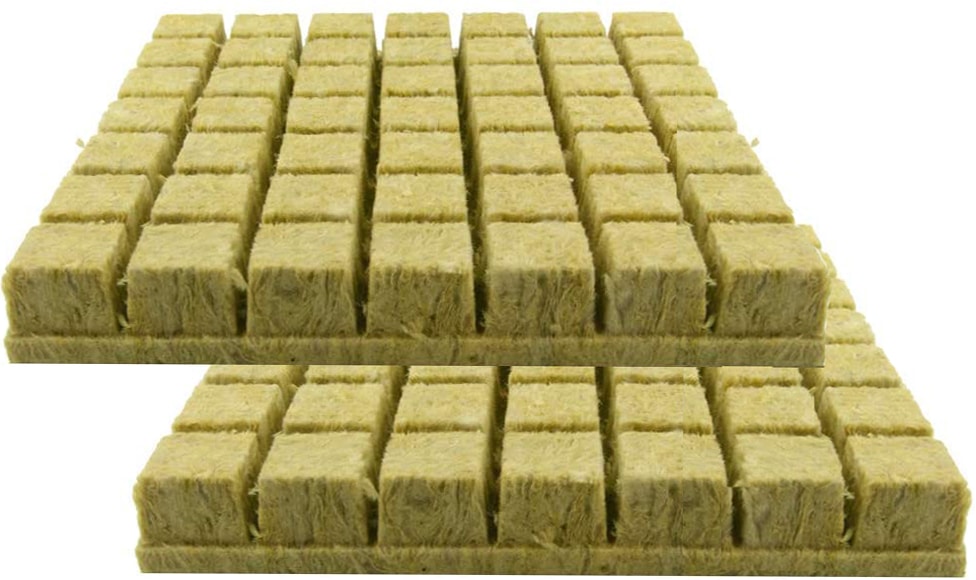 1.5
1.5
- 2 Sheets of 49 Plugs (98 Plugs Total)
- Twin Canaries Chart
- Capacity for absorbing nutrient solution, retaining plenty of oxygen
Types of Hydroponic Tower Gardens
Hydroponic tower gardens enable anyone to grow abundant herbs, veggies, leafy greens and more while saving space. These vertical hydro systems circulate nutrient-rich water to plants’ roots without soil. From compact indoor units to expansive freestanding outdoor towers, various styles are available to match your gardening goals and environment.
Indoor Tower Systems
Indoor tower systems like the AeroGarden are compact enough for kitchen countertops yet fitted with high-efficiency grow lights and self-contained reservoirs perfect for harvesting herbs, salad greens, and vegetables year-round.
With automated LED lighting that adjusts across all growth phases from seedling to harvest along with height extenders, it’s easy to raise substantial crops of your favorite edibles in just weeks. The fully integrated hydroponic circulation pumps nutrients directly to roots while preserving counter space for a small footprint.
Multi-level Homemade PVC Towers
For high-volume harvesting on a budget, construct multi-level PVC pipe towers using basic plumbing parts. An easy DIY project for large families or market gardeners needing pounds of produce daily, these vertical hydro systems work equally well outdoors under sunlight.
Assembled from standard joints and irrigation pieces, cutoff valves enable custom parallel columns that vastly multiply yields. Expect up to 10 times the harvesting capacity per square foot over soil gardens.
Floor-standing Bamboo Towers
Elegant floor-standing bamboo tower units bring natural style and sustainability to living spaces with their small footprint design. Each hollow stem houses a plant site that gets topped off manually through a reservoir tank linked to all openings.
External grow light setups shining from overhead suspend aromatically delicious leafy greens, herbs, cascading strawberries and more in a stunning vertical garden. System height and lighting needs factor into packaged costs.
Cylindrical Metal Towers
Constructed from heavy-duty metal, large cylindrical towers are freestanding for placement anywhere from rooftop patios to backyard spaces. Available in chest-level heights up to seven feet with 4-8 foot diameters, each tower bears the proportional weight and width for supporting 100+ full-sized vegetable plants!
Harvest bountiful crops of tomatoes, cucumbers, peppers eggplants and more from all sides as robust performers thrive through seasonal weather under the elemental protection these industrial tower frameworks provide.
What Does Indoor Tower Garden Include?
An indoor hydroponic tower garden leverages a vertical column structure to house all essential components in one unit for streamlined gardening. While products differ across manufacturers, most high-quality hydroponic tower kits contain the following equipment:
- Central tower column and baskets. The central tower frame provides stability and space to install planting baskets at different heights, where plants insert directly into the column. These removable baskets give built-in support for seedlings and mature plant roots while allowing ample air exposure. High-quality baskets feature mesh bottoms or perlite beds for drainage alongside durable plastic or fabric exteriors.
- Water pump and plumbing. Indoor tower gardens feature electric water pumps to perpetually pump nutrient solution from the integrated lower reservoir on a loop up the tower and through plant basket drains. Durable vinyl, PVC plastic, or silicone tubing form the closed-loop plumbing system to recirculate fluids without leaks.
- Custom nutrient solutions. The hydroponic fertilizers designed for tower systems come in either single-part or multipart mixes to provide the precise mineral nutrients plants require like nitrogen, calcium, sulfur, iron, and more. The formulations designed explicitly for hydroponics sustain plant growth optimally from seedling to harvest.
- Integrated grow lights. While sun lighting works well, dedicated full spectrum grow lights integrated into the tower garden give reliable, consistent indoor light levels. Combining red, blue, and white intensity, spectrums like LED grow lights maximize usable light for photosynthesis without excess heat or energy draw.
- Digital timer function. To automate and ensure consistent operation of the water pump and grow lights tailored to plant needs, tower gardens incorporate programmable digital timers. These make the system nearly autonomous once configured according to crop selection and growth stages.
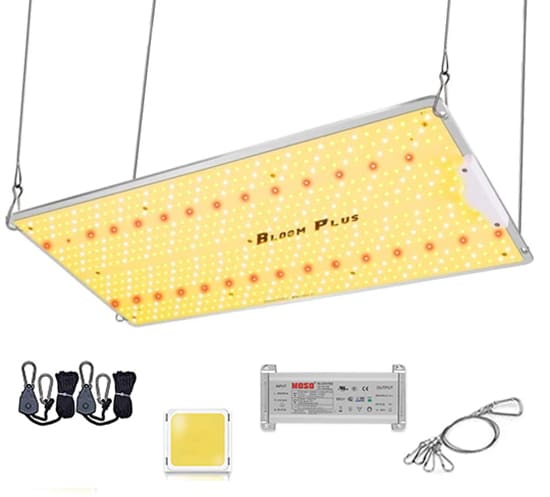 BLOOM PLUS LED Grow Lights, BP 2500W 2X4ft Coverage Grow Light Use with 646packs Samsung Diodes(Includes IR)
BLOOM PLUS LED Grow Lights, BP 2500W 2X4ft Coverage Grow Light Use with 646packs Samsung Diodes(Includes IR)
- For Indoor Hydroponic Plants Seeding Veg and Bloom
- Dimmable Sunlike Full Spectrum Plant Grow Lights
- 30-day money-back guarantee and a trusted 3 years warranty
How to Set Up a Vertical Gardening System?
Installing your own vertical hydroponic tower garden system is straightforward when following a few key steps. With the right assembly process and positioning in your interior space, you can have your productive garden up and running in no time.
Positioning
Choosing where to install your tower garden takes some forethought. You’ll need ample wall space and sufficient ceiling height to accommodate mature plants. Ensure you have a grounded electrical outlet to plug in the water pump, lights and timer. Pick a spot with temperatures between 60-80°F year-round. Gardens do best positioned near windows for supplemental sunlight and ventilation but avoid intense direct light which can overheat units.
Plan your location at least 6 inches from walls or other items to allow working room around the tower garden for planting, pruning and harvesting produce. Protect floors from any drips with waterproof mats. Mark and prepare your installation area before unpacking tower components.
Light
Proper lighting is crucial for indoor gardening success. Ensure your tower garden spot allows suspending the integrated LED full spectrum grow light above the central column to evenly bathe lower and upper plants. Position adjustable lights 12 to 18 inches above the highest basket spot for seedlings. As plants stretch, elevate lights accordingly, maintaining the 12-18 inch span for strong growth.
Use a timer to automatically run grow lights for 14–16 hours per day, unless ample sunlight suffices. Carefully plug in the light system to a grounded outlet and test functionality before moving forward with planting. Proper lighting fuels photosynthesis for thriving plants.
Soil & Planting
While hydroponic gardens don’t utilize soil, starting seedlings benefits from a perlite, vermiculite and coconut coir growing medium before transferring young plants into baskets. Gently place root starter plugs or germinated seeds 1 inch deep in baskets, then add your desired growing medium only halfway up around plant stems. This prevents damping off disease.
Follow spacing guidelines between seedlings and baskets to prevent overcrowding plants as they mature. Place the top and bottom baskets while new plants establish. Gradually add middle baskets when plants establish and tower frame is stable with weights like filled bottom baskets.
Maintenance
Once your tower garden is fully planted and operational, minor weekly maintenance keeps the system growing vigorously. Check nutrient levels in the reservoir, replenishing with a diluted solution to maintain the recommended PPM (parts per million) for your plant types. Adjust pH if needed to within the ideal 5.5 to 6.5 range using tested adjustment liquids.
Inspect baskets, stems and leaves weekly for any pest damage, disease or nutrient deficiencies. Prune aging leaves and stems as required. Wipe down tower exterior and interior baskets with dilute bleach solution monthly to prevent pathogen accumulation, especially when switching plant crops each season.
Fertilizing
The complete hydroponic mineral nutrient blends made for tower gardens provide the proper nutrition levels through the full plant lifecycle from seed to ripened fruit. Simply follow mix ratios and reservoir dilution rates based on current growth stage stated on the nutrient brand guidelines. Start more diluted, then increase to full strength at fruiting stage.
Test TDS (total dissolved solids) using an EC meter when adjusting reservoir levels to maintain optimal PPMs matching the period of plant development. Increase PPMs as plants mature for sufficient nourishment all season.
Pruning
As lower leaves and stems age on mature plants, pruning helps promote new growth and allows light penetration. Remove yellowing or dying foliage by snipping as close to the main stem as possible. For leggy growth, pinch back tender new shoots to encourage bushier habits if desired. Limiting upward stretch through pruning gives time for lateral fruited branches to form.
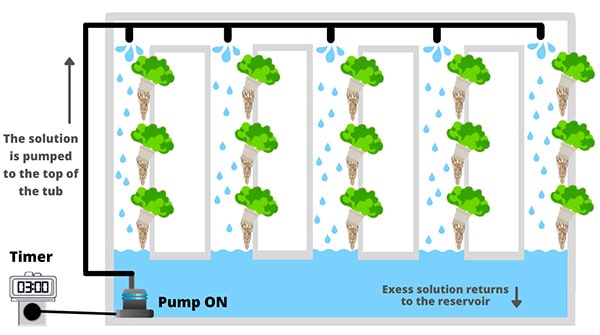
Disinfect pruning shears using diluted bleach between plants or baskets to prevent transferring diseases. Remove all clipped foliage from the tower garden to maintain tidy conditions and prevent pest attraction.
What Plants Are Suitable for Growing with Tower Gardens?
One of the best aspects of indoor hydroponic tower gardens is the diversity of crops you can cultivate in these vertical systems. When selecting plants, consider growth cycles, mature sizes, and preferred nutrient levels.
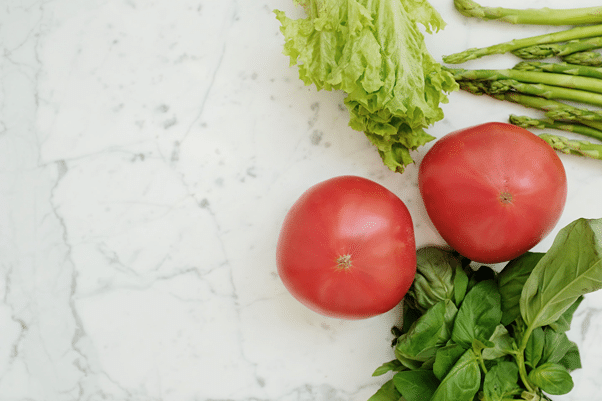
Here are top plants that flourish with indoor tower garden setups:
- Leafy Greens. Leaf lettuces, spinach, kale, arugula, and chard grow rapidly in towers, achieving harvest-worthy size in as little as 3–4 weeks from seed to baby greens. These shallow-rooted plants adapt well to container life and provide continual salad fixings.
- Tower gardens allow year-round access to fresh herbs like basil, parsley, cilantro, dill, mint, rosemary, oregano, and thyme which require consistent moisture levels and nutrient access that hydroponics provide. Herbs generally take 8–12 weeks from seedlings to first harvest.
- You can cultivate compact determinate tomato varieties of tower gardens if giving them more container depth, careful staking as they fruit, and regular nutrient replenishment. Prioritize dwarf, patio-type tomatoes suited for pots under 3 feet tall.
- Ever-bearing strawberries thrive with constant moisture and nutrients from tower gardens. The vertical towers accommodate dangling strawberry shoots. Combine flowering and fruiting plants for sweet berries all season indoors.
- Most sweet bell pepper cultivars adapt well to container tower production. Choose smaller, determinate pepper types under 16 inches tall for best results. Keep consistent soil moisture and nutrient levels for plentiful peppers through summer harvests.
- Smaller eggplant varieties like long skinny Asian types, Rosa Bianca, and fairy tale thrive with steady feeding and hydration that vertical towers provide. Stake plants for support once heavy with glossy eggplants for straight stems and optimal development.
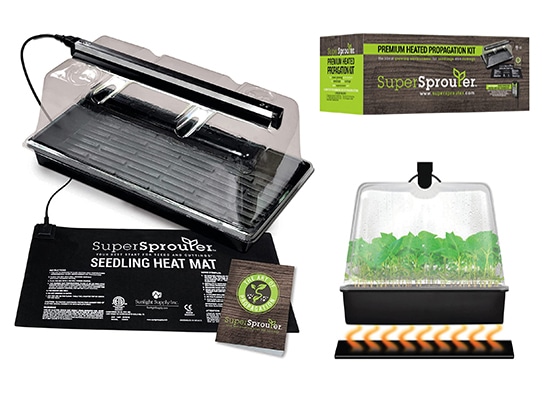 Super Sprouter Premium Propagation Kit with Heat Mat, 10
Super Sprouter Premium Propagation Kit with Heat Mat, 10
- Dome & T5 Light, 5 Piece, Black/Clear
- Art of Propagation booklet with expert advice for starting seedlings and cuttings
- Super Sprouter Seedling Heat Mat 10 in x 21 in is ETL listed
FAQs
What type of system is utilized in an indoor tower hydroponic unit?
Tower hydroponic gardens feature a vertical column design with stackable planting baskets that suspend roots in air while recirculating nutrient-rich solution perpetually flows from an integrated bottom reservoir to nourish plants.
What environment considerations are required for an indoor tower system?
A tower garden system requires consistent indoor conditions between 60-80°F, protection from direct intense light or heat sources, sufficient air circulation, and adequate wall/ceiling space to accommodate mature plant heights in the stacked column.
What core equipment pieces does a tower garden include for operation?
Main equipment pieces include the central tower column, removable plant baskets to insert into the tower, electric water pumps for the circulating hydroponic solution, vinyl tubing for the closed-loop irrigation system, LED full spectrum grow lights, and programmable digital timers to automate system components.
What method allows monitoring and adjustment of plant nutrition levels in the system?
Key metrics like pH, TDS (total dissolved solids), and EC (electrical conductivity) are used to monitor and balance the hydroponic nutrient solution. This ensures plants receive optimized soluble elements as they grow via perpetual contact between exposed roots and nutrient bath.
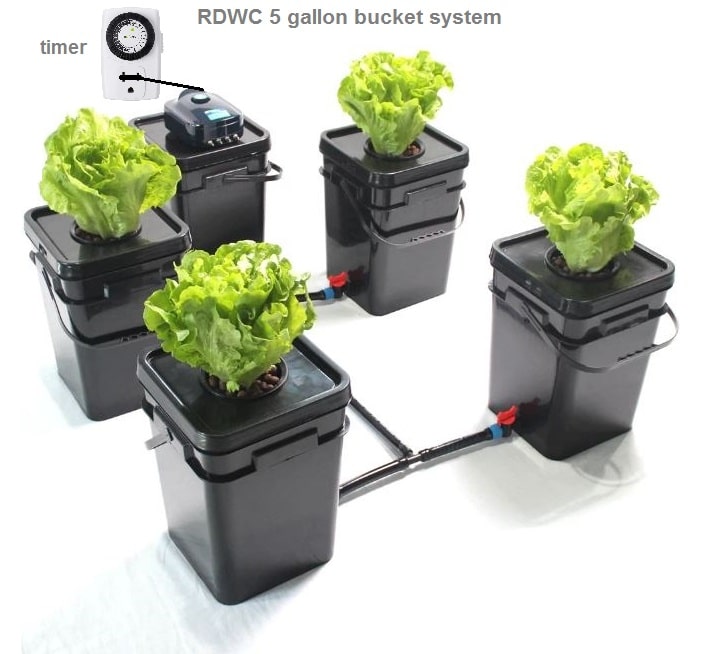
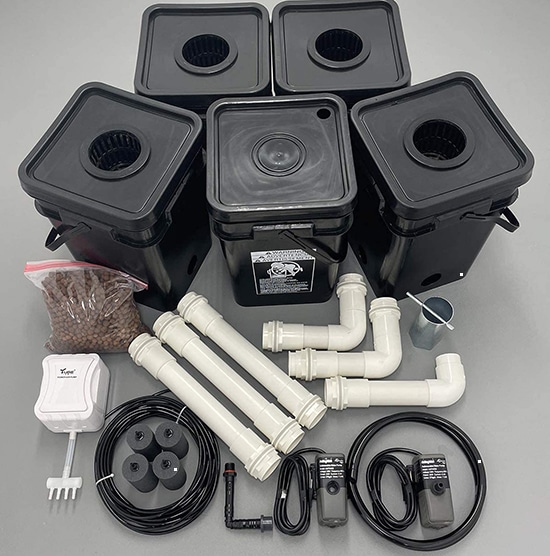 Recirculating Deep Water Culture (RDWC) Hydroponic Grow Kit System
Recirculating Deep Water Culture (RDWC) Hydroponic Grow Kit System
- Reservoir Bucket Connected to 4 Grow Buckets
- 400 Gallon/hour Circulating Pump
- Large 5 gallon square buckets, pre-drilled
